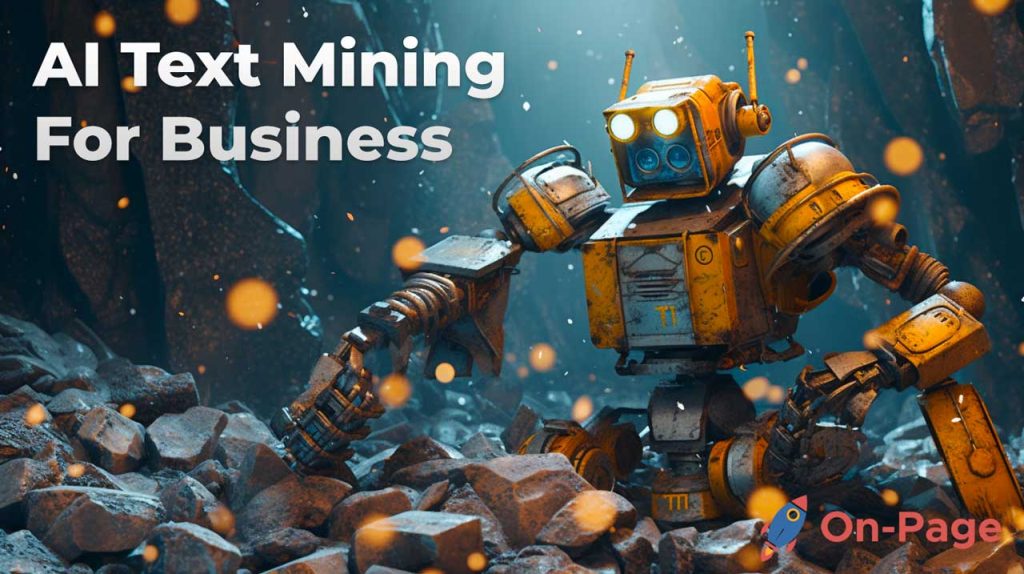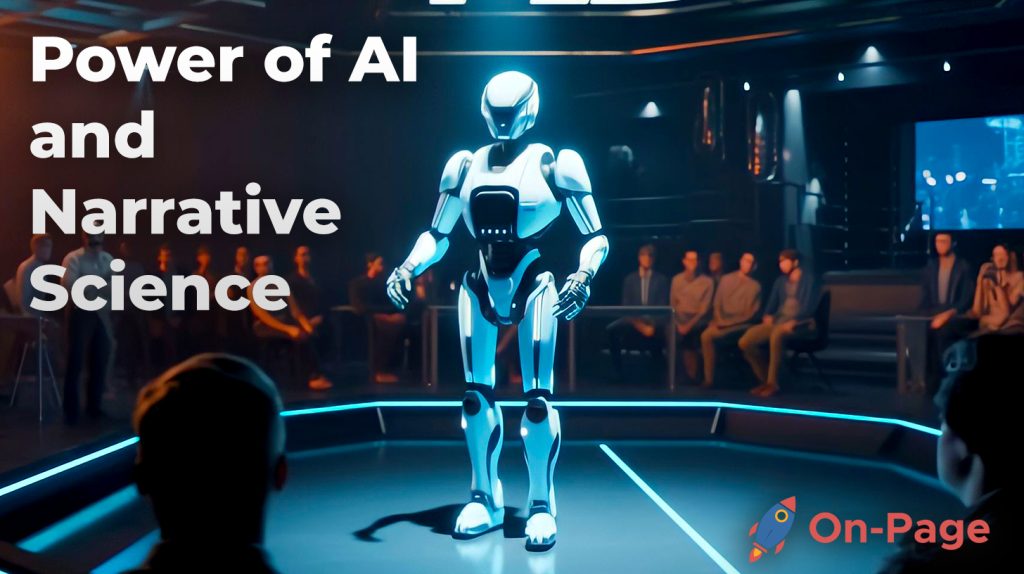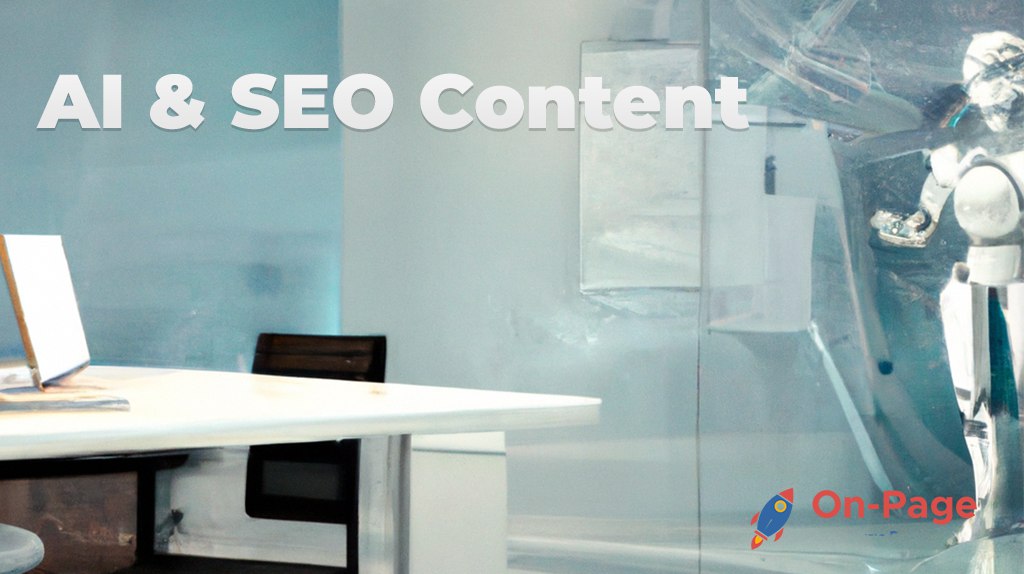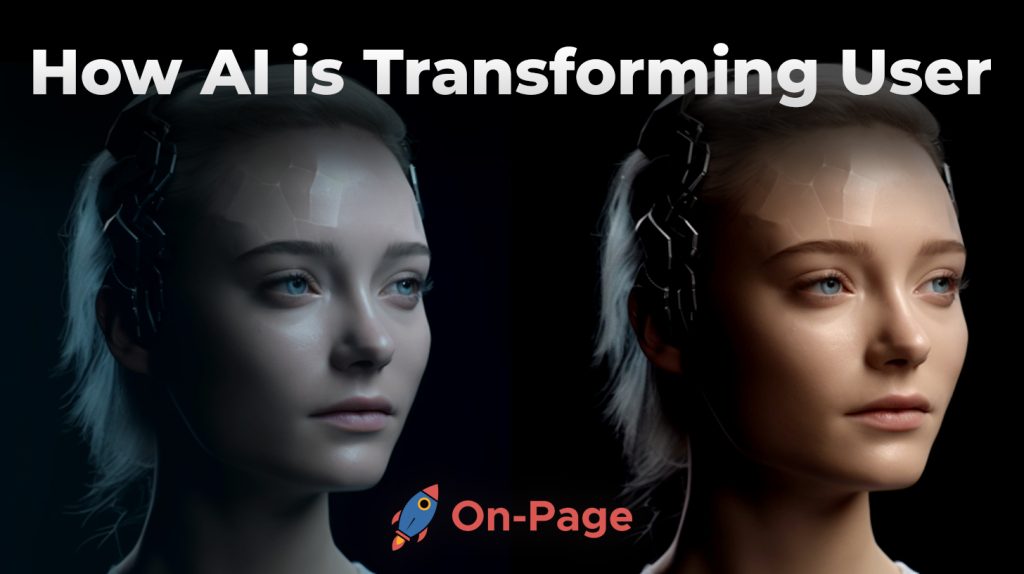Isn’t it fascinating how the high-quality content you’ve painstakingly crafted can continue to captivate a wider audience than ever before? Brace yourselves, as we’re about to unlock the power of AI for content repurposing! Imagine being a beloved chef who could transform a single dish into several mouth-watering delicacies, each more enticing than the last. With cutting-edge AI technology in our corner, this is precisely what awaits you on your journey to take content optimization by storm. So join us as we delve into how our revolutionary SEO optimization tool unleashes your content’s full potential and drives traffic, engagement, and conversion like never before!
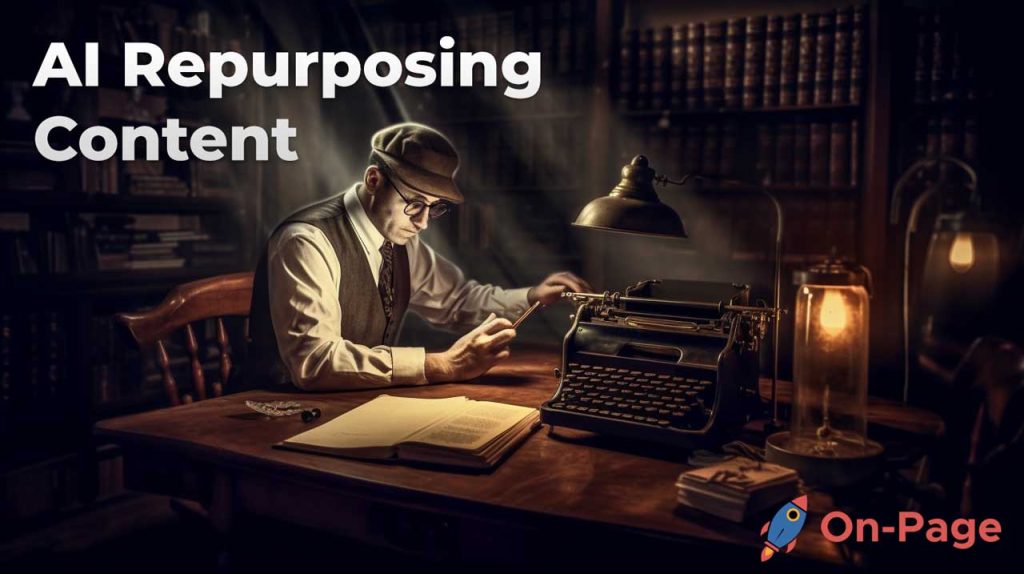
AI can be used to quickly and efficiently repurpose content by automating tasks such as choosing relevant video clips, generating captions or subtitles, summarizing blog posts, and more. With the help of AI-powered tools like Zubtitle, Copy.ai, and Repurpose.io, content creators can streamline their workflow and focus on developing creative ideas rather than tedious tasks. For rewriting articles so they appear to be unique, the On-Page.ai Stealth ReWriter is the top choice.
AI-Assisted Content Repurposing Techniques
AI is revolutionizing the way content repurposing is being done. From blog posts to long-form videos, AI can help automate the process and transform them into various formats that are suitable for different social media platforms. Some of the most promising AI-assisted content repurposing techniques include:
One of the most significant applications of AI in content repurposing is in generating alternative content forms from a piece of original content. For instance, if you have created a long-form video related to your business or industry, an AI tool can automatically transcribe the audio and generate text-based materials like blogs or whitepapers. In this way, you can reach out to a wider audience who may prefer reading rather than watching videos. For example, the On-Page Stealth ReWriter can rewrite existing content, making it 100% unique so you can syndicate it throughout the web.
Another AI-assisted technique for content repurposing involves personalization. It involves segmenting your audience and crafting messages that speak directly to their needs and pain points. With the help of natural language processing (NLP) and machine learning (ML) algorithms, you can classify your audience into different groups based on demographics, behavior, and online activity. This allows you to create engaging content that resonates with each specific group.
However, some critics argue that relying too much on AI for content repurposing may result in generic and repetitive messages that fail to connect with the audience. They point out that human creativity and intuition are essential for producing unique and compelling content. While this is true, we believe that AI can complement human efforts by providing insights into audience segmentation and preferences.
With these groundbreaking techniques, AI-assisted content repurposing has become easier than ever before. Now let’s dive deeper into how AI can help you transform long-form videos into more engaging snippets across various social media platforms.
Transforming Long-Form Videos
Repurposing long-form video content can be challenging, but with the help of AI, it is now possible to create engaging social media snippets quickly and efficiently. Some ways in which AI can assist with content repurposing are:
Automatic selection of attention-grabbing clips: An AI tool can scan the entire video and identify important segments, such as an interesting statement or a product demo, that could be used for creating social media snippets. This helps save a lot of time and effort in manually going through the whole video.
Trimming videos to meet platform-specific requirements: Different social media platforms have different video length and size requirements. With AI tools for content repurposing, you can automatically adjust the video length and size to fit each platform’s specifications.
Think of this as a tailor who can customize a dress to fit perfectly on anyone’s body type.
Adding sounds, text, or music to make it more appealing: Plain video clips don’t grab people’s attention as much as those featuring sound effects, captions, music, or animation. AI-based video editing tools like ClipMaker.ai or Kamua can add these elements without requiring any manual editing skills.
The result is high-quality, engaging content that appeals to your audience while still aligning with your brand messaging.
However, some people might argue that using AI tools for content repurposing makes posts’ uniformity lose out on emotional nuances that human editors can pick up on. While there is some merit to this argument, we firmly believe that using AI-assisted techniques for content repurposing ultimately saves businesses both time and money while still maintaining quality.
Generating Social Media Posts
Social media has become a critical component of most businesses’ marketing strategies. Social media platforms offer unique ways for businesses to engage with their target audience and promote their brand. However, creating content that stands out on social media can be challenging. It requires a lot of creativity, time, and effort to develop engaging and appealing posts. Fortunately, AI is here to take some of the burden off marketers by generating social media posts that resonate with their audience.
AI-powered tools can help generate social media posts from scratch by inserting wit, generating ideas, workshopping the perfect caption, adding hashtags, and creating visual pairings. These tools analyze your brand’s voice, tone, and style to create personalized posts aligned with your business objectives. For instance, some AI-powered tools use natural language processing algorithms to understand the context behind your social media post briefs and generate captions and short-form text that capture your brand’s essence.
AI-powered social media post generators also provide suggestions for images or videos that align with your captions. The system identifies relevant visual elements using advanced computer vision algorithms that scan billions of photos and videos on the internet in seconds. This way, you are assured that your visuals will look great while complementing your brand message.
Some critics argue that AI-generated content lacks authenticity and originality since it is not created by human beings. They claim that consumers can quickly tell when an online post is not authentic or lacks a personal touch; therefore, they tend to ignore or overlook it. While there’s an element of truth in this argument, it’s worth noting that AI-generated content can be just as effective as human-generated content if done correctly. What matters most is how well the generated content aligns with your brand messaging and resonates with your audience.
Think about it: Have you ever had a conversation with someone and felt that they were not truly listening or engaged? The same can be said about social media content. Even if the post is created by a human, if it does not capture the audience’s attention, it won’t make an impact. Conversely, AI-generated content, if adequately customized and tailored to your brand’s attributes and audience preferences, can help you achieve the results you’re looking for.
Now that we have discussed how AI can help generate social media posts let’s delve into specific AI tools that businesses use for content repurposing.
- A recent study revealed that the adoption of AI in content marketing has increased by over 300% from 2016 to 2021, indicating a significant interest in employing AI for content-related tasks such as repurposing.
- According to a marketing survey conducted in 2020, around 75% of marketers who used AI or automation tools for content repurposing experienced an increase in engagement and traffic on their social media channels.
- In a 2021 research report, businesses that utilized AI-driven content repurposing tools saw a 30-40% reduction in time spent on manual tasks associated with repurposing, allowing them to focus more on developing creative and strategic campaigns.
AI Tools for Content Repurposing
AI-powered tools have transformed content repurposing by streamlining the process and reducing the time and effort required to create multiple pieces of content from a single source. Some popular AI tools used for content repurposing include:
ClipMaker.ai: This tool helps you turn long-form videos into social media snippets quickly and easily by choosing attention-grabbing clips, trimming the video to meet time limits, readjusting video ratio and size, and adding sounds, text or music to make it more appealing.
Zubtitle: This AI tool helps create captions and add subtitles to social media videos. It uses advanced speech recognition technology to create accurate captions automatically.
SocialBu: This tool provides several features such as scheduling posts, analytics tracking, collaboration management with team members, automation rules that trigger actions based on specific scenarios like casual conversations with customers and canned responses.
Studiobinder: Studiobinder enables you to edit online scripts in real-time through cloud-based software applications which enhance your overall production workflow.
Stealth Writer: The On-Page.ai Stealth Writer is an AI copywriting tool that automatically generates lengthy blog post ideas based on user input data such as title or subject matter.
While there are several AI tools available for content repurposing, some critics argue that these tools lack the personal touch required to create authentic and engaging content. However, AI tools are designed to augment the creative process, not replace humans altogether. Businesses can still leverage AI tools to streamline their content production process and free up more time for human creativity.
Think of AI tools like a chef’s knife. A skilled chef will use a sharp knife to cut vegetables precisely and efficiently, saving time in the kitchen while creating delicious meals. The same can be said about AI tools; they help businesses produce high-quality content while saving time and resources.
Video Editing and Captioning Tools
Videos are probably the most engaging type of media content. They can attract the attention of your audience, convey your message effectively, and deliver an emotional impact. However, creating a video is not enough to make it successful. You need to optimize it for each channel and format, and you need to make sure that it has captions so that you can reach out to viewers who prefer silent autoplay.
This is where AI-powered video editing and captioning tools come into play. These tools can help you transform long-form videos into social media snippets, trim them to meet time limits, adjust their size and ratio, add sounds, music, or text effects, generate captions automatically or manually, and publish them across multiple platforms.
ClipMaker.ai is one such tool that simplifies the creation of clips for Instagram, TikTok, Pinterest, Facebook, LinkedIn, Twitter, and other channels. It uses AI algorithms to detect the best moments in your video based on visual cues like movement and color. You can preview and select these scenes from a storyboard view or a timeline view, and customize their duration and order as needed. You can also apply various filters, transitions, stickers, emojis, logos or watermarks to make your clips more distinctive.
Another tool that can aid your repurposing efforts is Zubtitle.ai which uses AI algorithms to turn audio files into accurate captions that increase accessibility and engagement by up to 40%. With Zubtitle’s intuitive interface you can polish up the generated captions using its numerous features: fine-tuning the dialogue timing or position on screen; adding style options like color schemes or fonts; generating thousands of variations of captions tailored for different devices; saving drafts with templates to reuse.
Some users may argue that relying on AI-generated captions can lead to inaccuracies such as errors in spelling or grammar if the AI misinterprets an accent. However, these errors can be easily corrected through manual caption editing or set to gibberish, which can create highlighted words without actual text, just to emphasize parts of the video. To avoid such issues and improve accuracy on screen while reducing time by up to 90% compared to manual transcription there is CaptionSaver.
Now that we have seen how AI-powered video editing and captioning tools work, let’s take a look at how they enhance audio content.
- AI-powered video editing and captioning tools can help optimize video content for different channels and formats, increase engagement and accessibility, and save time and effort. Tools like ClipMaker.ai and Zubtitle.ai use AI algorithms to detect the best moments in your videos and generate accurate captions automatically or manually. While there may be some concerns regarding AI-generated captions’ accuracy, manual editing or options like Gibberish or CaptionSaver can overcome such issues. These tools can be crucial for businesses seeking to repurpose their long-form video content for social media snippets and reach a wider audience with compelling captions.
Enhancing Audio Content with AI
Audio content is another form of media that benefits from AI enhancement. It could be an interview, a podcast, a webinar, or a lecture that you want to repurpose for social media or your website. In such cases, you need to extract the most valuable information from the audio, summarize it into short snippets, add visual appeal using audiograms or AI-generated images, and distribute it across various platforms.
One tool that can help you do this is Podcast.co’s Headliner.ai which creates dynamic videos for social media platforms by automating the conversion of your MP3 podcast files into eye-catching videos. It generates captions automatically and allows you to add waveforms, images and backgrounds as well as adding static text overlays on top of titles & descriptions.
Think about trading cards being reduced in size while retaining their image and text so they are easily consumable on any device; similarly WaveMaker makes design elements come alive which makes them standout, like heightened features on a trading card.
AI-powered video editing and captioning tools as well as audiograms and image-generators are just a few of the ways that AI is unlocking the power of content repurposing. In the next section, we will look at how AI provides solutions for summarizing and visualizing blog posts so that you can optimize your content experience today.
Summarizing and Visualizing Blog Posts
Blog posts are an essential component of content marketing for businesses of various sizes. However, creating a high-quality blog post requires significant effort, research, and time. Fortunately, with AI-assisted content repurposing tools, you can easily repurpose existing blog content to create new pieces of content optimized for your target audience.
One popular AI tool for summarizing blog posts is Pictory. Using natural language processing (NLP) algorithms, Pictory reads through pages of text and summarizes them into the core message or main idea in minutes. With Pictory, users can access insights into their blog posts’ messaging instantly.
In addition to summarizing blog posts, visualizing content is also an effective way to repurpose them. Infographics and data visualizations are examples of visuals that help to make complex information more digestible for readers. Tools such as Canva and Visme use templates to make it easy for non-designers to create stunning infographics or images based on their website’s analytics data.
For example, suppose you’re a SaaS software provider who writes lengthy blog posts about in-depth technical topics. In that case, using Pictory to summarize your ideas into short pieces suited for Twitter makes it easier to share those ideas with your followers on LinkedIn or Twitter.
Similarly, creating infographics that visualize the most valuable parts of your blog post enables you to generate additional social shares while attracting more readership to the original post. By producing compelling visuals in this way, businesses can attract users who may not have considered themselves interested in technical topics before.
Summarizing and visualizing blog content are useful techniques because they help the target audience understand what a company does or offers more efficiently than reading hundreds or thousands of words. Visualization boosts understanding by giving the user the necessary context instantly and helps content creators communicate their message concisely.
For instance, if you want to explain how your software development SaaS company works, instead of typing out verbose blog posts, break down complex information using images or animation. This way, even a reader who doesn’t understand the technical jargon will be able to grasp the idea in seconds.
However, some may argue that summarizing or visualizing can dilute the message. Still, with AI technology tools such as Pictory and Visme which use natural language processing (NLP) algorithms to generate summaries quickly; businesses can rest assured the core messages remain intact.
Summarizing and visualizing blog content is like repackaging your products for different markets. You package similar products’ contents into different shapes and sizes depending on the target market you wish to sell them to. With Pictory and Visme users have access to powerful tools designed to help businesses repackage their messaging for various social media channels or audiences.
As seen throughout this post and others on our website, AI-assisted content repurposing tools have become an essential component of digital marketing tactics in 2023. Using On-Page.ai is the superior choice amongst competitors like Repurpose.io because it employs AI-powered features that simplify and improve content creation processes for businesses of all sizes. By implementing artificial intelligence technologies like On-Page.ai, businesses now have advanced toolkits specifically designed to help them stand out in a crowded industry.
FAQ
What are some real-life examples of successful content repurposing using AI?
There are many real-life examples of successful content repurposing using AI that demonstrate the tremendous potential of this technology. One such example is IBM Watson’s work with The Guardian to repurpose archival content for new stories. By using natural language processing algorithms, Watson was able to identify relevant articles in The Guardian’s archives and suggest new angles or perspectives that could be used for current reporting. As a result, The Guardian was able to publish engaging and informative articles on topics ranging from climate change to politics.
Another example comes from Coca-Cola, which used AI to create personalized video ads for its customers. By analyzing user data and preferences, Coca-Cola was able to serve up customized video content that resonated with individual viewers. This approach led to a 16% increase in purchase intent among target audiences and helped Coca-Cola connect with its customers on a more personal level.
Overall, these examples demonstrate how AI-powered content repurposing can help organizations breathe new life into old content, generate fresh ideas, and deliver tailored experiences that drive engagement and revenue. As AI continues to advance, we can expect to see even more innovative uses of this technology in the world of content creation and marketing.
What ethical considerations should be taken when using AI for content repurposing?
As AI continues to revolutionize content repurposing, ethical considerations must also be taken into account. The biggest concern is the potential risk of copyright infringement. While AI can create new content by combining existing pieces, it’s important to ensure proper citation and attribution are given.
Additionally, there’s a potential for bias in repurposed content. If the original content had biased language or perspectives, the AI-generated content will inherit those biases as well. Measures must be taken to reduce this possibility through the use of unbiased data sets and regularly checking the output for any problematic language.
Furthermore, there is an ethical concern when using AI to replace human workers. A 2020 report by the World Economic Forum estimated that around 85 million jobs could be displaced by AI by 2025 (WEF, 2020). This calls for a responsible implementation of AI-powered tools that support rather than replace human work.
In conclusion, while there are immense benefits to using AI for content repurposing, we must remain cautious about its potential risks and consequences. It’s crucial to take ethical considerations seriously and prioritize responsible use of these powerful technologies.
What specific AI models can be utilized for content repurposing?
There are several AI models that can be utilized for content repurposing, but a few of the most effective ones include natural language processing (NLP), machine learning (ML), and deep learning (DL).
NLP is particularly useful for analyzing text data and identifying key themes or topics. This allows content creators to better understand their audience’s interests and tailor their content accordingly. According to a recent study by Grand View Research, the global NLP market size is projected to reach $43.1 billion by 2025, indicating the increasing importance of this technology in various industries.
ML and DL are especially valuable for extracting insights from large datasets and predicting future trends. By training algorithms on past data, these AI models can help identify patterns and preferences that can inform content creation strategies. In fact, a report by MarketsandMarkets predicts that the global ML market size will grow from $1.4 billion in 2017 to $8.8 billion by 2022.
Overall, using AI models for content repurposing is an effective way to stay ahead of trends and create compelling content that resonates with audiences.
How can AI improve the speed and efficiency of content repurposing?
AI can revolutionize the content repurposing process by increasing speed, efficiency and accuracy. By leveraging machine learning algorithms and natural language processing techniques, AI can quickly analyze vast amounts of content to identify themes, topics and patterns.
For instance, AI-powered content intelligence platforms such as CONCURED can automatically recognize and classify different types of content assets, ranging from blog posts and articles to videos and social media updates. This allows marketers to easily evaluate the effectiveness of their content marketing campaigns, identify high-performing topics, and create new pieces of content that resonate with their target audience.
Furthermore, AI tools such as automated summarization software can help streamline the content creation process by generating shorter-form versions of longer articles or blog posts. This not only helps increase efficiency but also provides a way for brands to reach audiences with varying levels of interest or attention spans.
In fact, a recent study by Accenture found that by using AI technology in combination with human expertise, companies can increase productivity by up to 40%. This shows that AI is a powerful tool for improving the speed and efficiency of content repurposing.
Overall, AI has the potential to dramatically improve the speed and efficiency of content repurposing. By utilizing its advanced capabilities in data analysis and automation, marketers can better understand their target audience’s needs, deliver value-driven messages at scale, and ultimately drive better business outcomes.
Is it cost-effective to use AI for content repurposing?
Yes, using AI for content repurposing can be highly cost-effective. In fact, a study by IBM found that businesses that adopt AI technology could save up to 50% on annual operation costs.
AI-powered content repurposing tools such as Natural Language Processing (NLP) and machine learning algorithms can help automate various tasks involved in the repurposing process, including content analysis, summarization, and translation. These tools can not only save time but also improve the quality and accuracy of the resulting content.
Moreover, according to a report by MarketsandMarkets, the global AI market size is expected to grow from $21.5 billion in 2018 to $190.6 billion by 2025, indicating a significant increase in demand for AI-powered solutions across various industries.
Therefore, despite the initial investment required for implementing AI technology for content repurposing, the long-term benefits in terms of cost savings and enhanced productivity make it a wise investment decision for businesses looking to stay competitive in today’s digital landscape.

